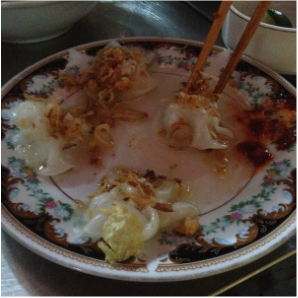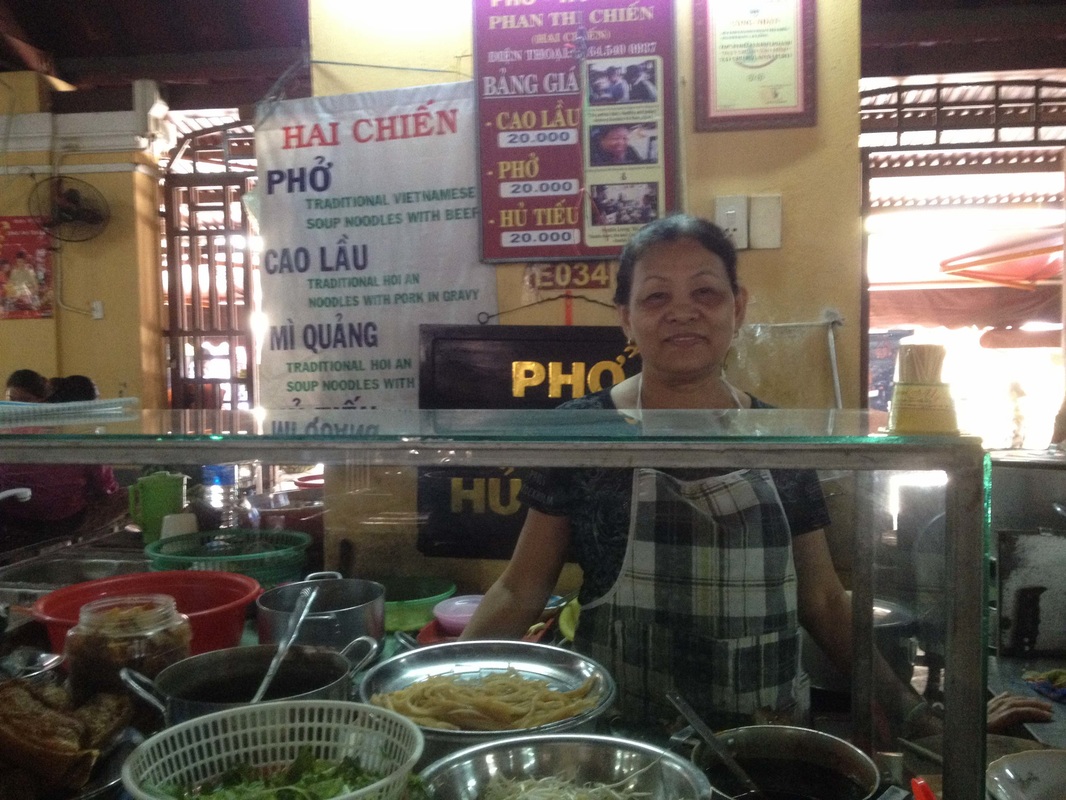Hoi An the UNESCO World Heritage Town of Vietnam. It has a whole different feel to the rest of Vietnam, uniquely touristy, beautiful and serene all at once. As many have pointed out the World Heritage title has both helped and hurt Hoi An in many ways. Having heard about this we decided to stay in one of the many guesthouses listed on Airbnb outside of the main town. It was a good choice as the streets are crowded with tourists & group tours, all coming in for a day and then moving on, which honestly is not enough time to see and appreciate this town.
A line of cyclos (bicycle tuktuks) parades down the street every afternoon, all holding older asian and western tourists who eagerly video and photograph everything that passes by them in a blur. Will they remember it tomorrow when they’re in another city?
Despite this Hoi An is picturesque and we loved it. There are many heritage family trading houses that are in shambles which you can visit (for the price of a 5 pass touristic ticket), bridges, and temples. As Hoi An has its roots in trade, being a river port, it was economically very important to the Vietnamese and traders they dealt with, namely Chinese, Japanese. So many of these older houses were trader houses, established and selling silks, precious gemstones, and carvings.
The houses themselves were really interesting, and the trader expats established their own temples for worship and contributed to the city itself, such as the Japanese Friendship Bridge – built in the early 1900’s by the japanese expat community. There are Chinese and Muslim temples too.
The Food….
Every day we cycled into town (only 7min by bike) and were greeted with the street and food market. As you will know food being our favourite thing we quickly hunted down Anthony Bourdain’s recommendations when he came to Hoi An.
(Video from No Reservations: Hoi An here)
 Cao Lao with pork crackling, hand pulled noodles and lots of vegetables – delicious!
Cao Lao with pork crackling, hand pulled noodles and lots of vegetables – delicious!
We tasted the local dish
Cao Lao – a noodle broth, which to be made authentically, has to be boiled in the water from the local well. It took me two tries to find the store Anthony went to. Its in the Food Market, and just look for the big black and gold sign with Cao Lao on it. (see pic below)
We also tasted the other local favourite White Roses, some sort of dumplings that were delicious! And sprinkled with dried garlic…mmmm

White Roses Dumplings….heavenly!
|

Cao Lao store (see black and gold sign behind her!)
|

Oh yum, Banh Mi with everything – yes please!
|
My other favourite was trying ‘the best Banh Mi’ according to Mr Bourdain, and yes it was pretty spectacular. Here i am enjoying every mouthful. The bread was crispy and fresh, the meat was flavourful and the vegetables enhanced, with just a hint of chilli burn….mmm.my mouth is watering as I write this.

Banh Mi Phuong – the best in town! This is Ms Phuong’s second shop!
|
Arguably the best thing to do was to stroll around in the afternoons as the sun was setting, after the heat of the day died down, to enjoy the buzzing street life. We had a lovely sunset boat ride by a wizened old lady who was surprisingly strong.
We managed to meet up with our friends Tanya Mitch and their friend Andrew who joined us for a boat ride and dinner!
 Cao Lao with pork crackling, hand pulled noodles and lots of vegetables – delicious!
Cao Lao with pork crackling, hand pulled noodles and lots of vegetables – delicious!